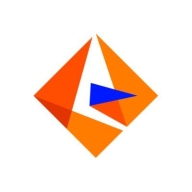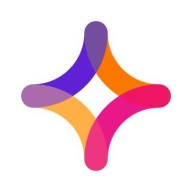

Jitterbit Harmony and Informatica Enterprise Data Lake compete in data integration and management. Jitterbit Harmony is favored for support and pricing, while Informatica's robust features justify its higher cost.
Features: Jitterbit Harmony provides ease of integration and scalability, with seamless API management and real-time data synchronization. Informatica Enterprise Data Lake includes comprehensive data management, advanced data processing, and analytics tools. Jitterbit is agile and user-friendly, whereas Informatica offers deeper insights and extensive analytics.
Ease of Deployment and Customer Service: Jitterbit Harmony offers cloud-based intuitive deployment with strong customer support and quick response times. Informatica Enterprise Data Lake provides complex on-premise and cloud deployment, needing more time but benefits from comprehensive support and detailed documentation.
Pricing and ROI: Jitterbit Harmony features low setup costs, promising quick ROI with its subscription model. Informatica Enterprise Data Lake involves higher setup costs, with ROI impacted by its extensive features for large enterprises. Jitterbit attracts budget-conscious businesses seeking rapid ROI, while Informatica suits those prioritizing functionality and long-term benefits.

The Intelligent Data Lake enables raw big data to be systematically transformed into fit-for-purpose data sets for a variety of data consumers. Data scientists and analysts can quickly find the data they’re looking for using semantic and faceted search. They can see data profiles, lineage, and other relationships to know whether they can trust the data and whether it’s fit-for-use in their analytic projects.
Jitterbit Harmony is a comprehensive platform for data integration and API management, enabling seamless synchronization and automation across cloud-based and on-premises applications.
Users leverage Jitterbit Harmony to integrate systems like ERP and CRM applications, simplifying complex data workflows and enhancing automation. It supports efficient data migration and ensures smooth connectivity, handling diverse integration needs and helping streamline business processes. Users emphasize its drag-and-drop functionality and extensive templates, which contribute to its robust performance. However, improvements are needed in data mapping, error message clarity, and documentation, especially when dealing with large data volumes.
What are the key features of Jitterbit Harmony?Companies across retail, manufacturing, healthcare, and finance sectors use Jitterbit Harmony to integrate critical applications and automate workflows. In retail, it connects inventory systems with sales platforms, reducing manual effort. Manufacturers sync their ERP systems with supply chain software, optimizing operations. Healthcare organizations integrate patient management systems with insurance databases, streamlining patient care. Financial institutions use it to connect accounting software with banking systems, ensuring real-time financial data exchange.
We monitor all Data Integration reviews to prevent fraudulent reviews and keep review quality high. We do not post reviews by company employees or direct competitors. We validate each review for authenticity via cross-reference with LinkedIn, and personal follow-up with the reviewer when necessary.